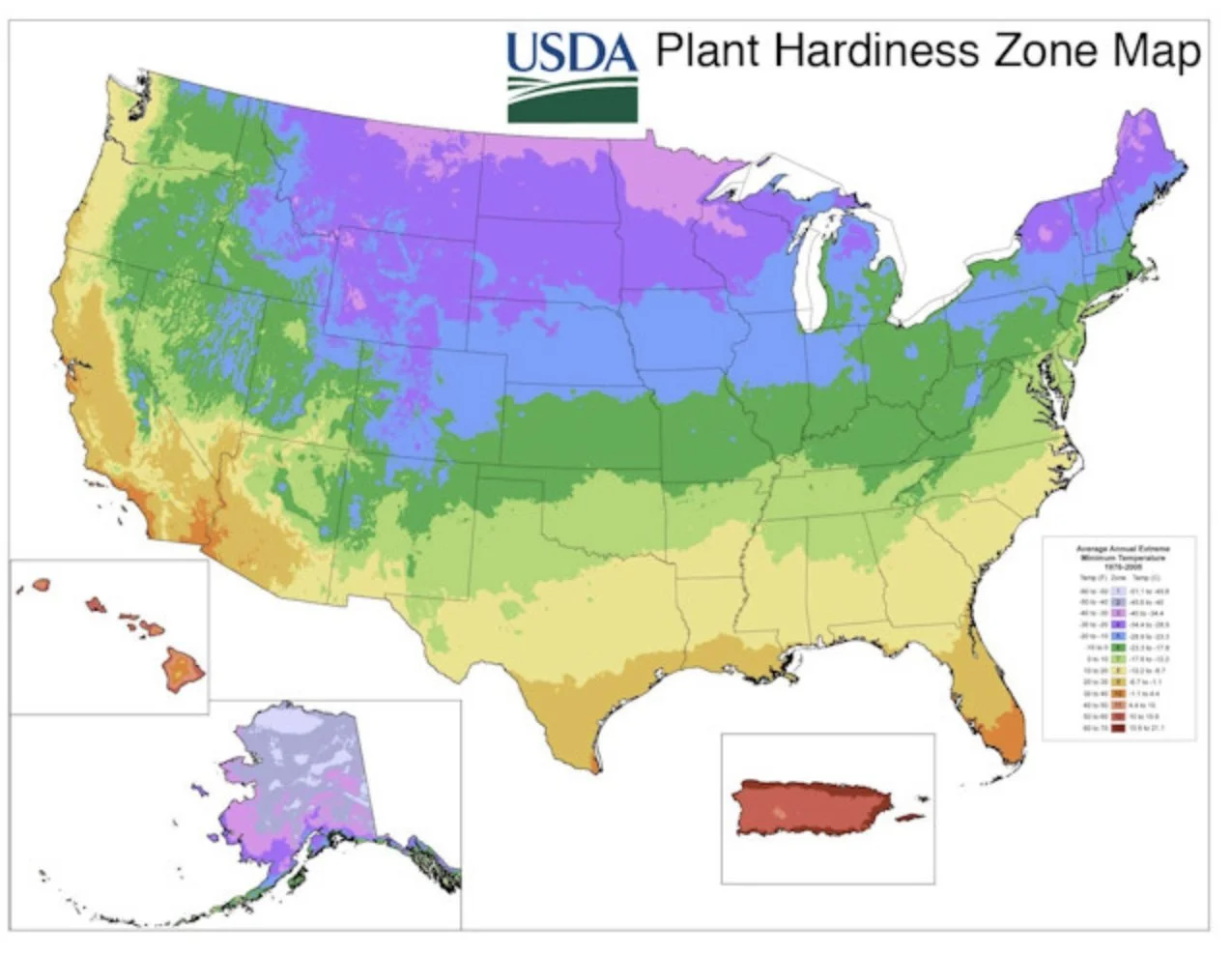USDA Released New Plant Zone Map 2023
/The USDA released a new, updated Plant Zone Map and...things have changed!
Most of us in Ulster and Dutchess counties were listed as Zone 5 in the 2012 Plant Hardiness Map.
The 2023 map is based on 30-year averages of the lowest annual winter temperatures at specific locations, is divided into 10-degree Fahrenheit zones and further divided into 5-degree Fahrenheit half-zones. Like the 2012 map, the 2023 web version offers a Geographic Information System (GIS)-based interactive format and is specifically designed to be user-friendly. Notably, the 2023 map delivers to users several new, significant features and advances. The 2023 map incorporates data from 13,412 weather stations compared to the 7,983 that were used for the 2012 map.
Here's an enlargement of the new 2023 map:
How are the zone numbers and colors interpreted? What do they mean?
"The Plant Hardiness Zone Map (PHZM) is based on the average annual extreme minimum winter temperature, displayed as 10-degree F zones ranging from zone 1 (coldest) to zone 13 (warmest). Each zone is divided into half zones designated as ‘a’ and ‘b’. For example, 6a and 6b are 5-degree F increments representing the colder and warmer halves of zone 6, respectively. "
The new map is available online here: https://planthardiness.ars.usda.gov
How should I use the map when growing plants?
Zone numbers are typically listed with the descriptions of perennial plants in catalogs and other sales information produced by commercial nurseries, plant suppliers, etc.
All Plant Hardiness Zone Maps (PHZM) should serve as general guides for growing perennial plants!
So don't start planting those tropical gardens quite yet.
"Growing plants at the extreme range of the coldest zone where they are adapted means that they could experience a year with a rare, extreme cold snap that lasts just a day or two, and plants that have thrived happily for several years could be lost. Gardeners need to keep that in mind and understand that past weather records cannot provide a guaranteed forecast for future variations in weather.
They should consult with other knowledgeable producers and gardeners (e.g., established nurseries or Master Gardeners) or extension services (see the links on the homepage) with extensive expertise with conditions at their locales."
*Victoria Gardens is seeing first-hand out in the field which plants are thriving in our area and which ones struggle. Victoria also keeps a close eye on which plants are invasive.
"Furthermore, gardeners should recognize that many other environmental factors, in addition to hardiness zones, contribute to the success or failure of plants. Wind, soil type, soil moisture, humidity, pollution, snow, and winter sunshine can greatly affect the survival of plants. Warm season heat and moisture balance are particularly important in this regard. The way plants are placed in the landscape, how they are planted, and their size and health can also influence their survival.
• Light: To thrive, plants need to be planted where they will receive the proper amount of light. For example, plants that require partial shade that are at the limits of hardiness in your area might be injured by too much sun during the winter because it might cause rapid changes in the plant’s internal temperature.
• Soil moisture: Plants have different requirements for soil moisture, and this might vary seasonally. Plants that might otherwise be hardy in your zone might be injured if soil moisture is too dry in late autumn, and they enter dormancy while suffering moisture stress.
• Temperature: Plants grow best within a range of optimal temperatures, both cold and hot. That range may be wide for some varieties and species but narrow for others.
• Duration of exposure to cold: Many plants that can survive a short period of exposure to cold may not tolerate longer periods of cold weather.
• Humidity: High relative humidity limits cold damage by reducing moisture loss from leaves, branches, and buds. Cold injury can be more severe if the humidity is low, especially for evergreens.
Gardeners or nursery growers interested in more detailed information, or examples for how the PHZM could be applied as a decision-making tool for planting, can consult a publication developed for the 2012 version of the PHZM:
Widrlechner, M.P., C. Daly, M. Keller, and K. Kaplan. 2012. Horticultural Applications of a Newly Revised USDA Plant Hardiness Zone Map. HortTechnology, 22: 6-19. Available at https://dr.lib.iastate.edu/entities/publication/d476e893-64d9-457c-91da-2eb3818fa961"



